Louisiana Maneuvers
When Gen. George Marshall became U.S. Army Chief of Staff on Sept. 1, 1939, the United States Army had less than 190,000 soldiers, most units understrength. The National Guard lacked personnel and modern equipment for training. Marshall knew that the Army would need to grow exponentially, so when a limited National Emergency was declared, he federalized the National Guard troops to add to the regular Army units and form a framework enabling the Army to grow rapidly.
Marshall then turned his attention to leadership of this growing Army. He had learned in World War I that that senior officers didn’t have experience commanding large forces in the field; all multi-unit training was on paper. He remembered the “unfortunate results of corps command by individuals who had never commanded divisions in actual operations,” and determined this would not happen again. He planned the largest training maneuvers the Unites States Army had ever participated in. These exercises would be expensive, but necessary. In February 1940, Marshall wrote:
The expense of maintaining our Army is heavy, but to maintain the troops without properly training them would be inexcusably wasteful, as well as highly dangerous in the present world situation. The Army has never been permitted to train in time of peace except on a basis so limited that the officers have been largely without practical knowledge of the management and leadership of brigades, divisions, and army corps.
This year a great emergency, and the wise direction of the President, has given the Army, for the first time in peace, and opportunity to learn how to fight as a team. Morale is high, we are actually building a field army.
In testifying to Congress to justify the expense of a large-scale maneuver, Marshall is reported to have said, “My God, Senator, that’s the reason I do it. I want the mistakes down in Louisiana, not over in Europe.”
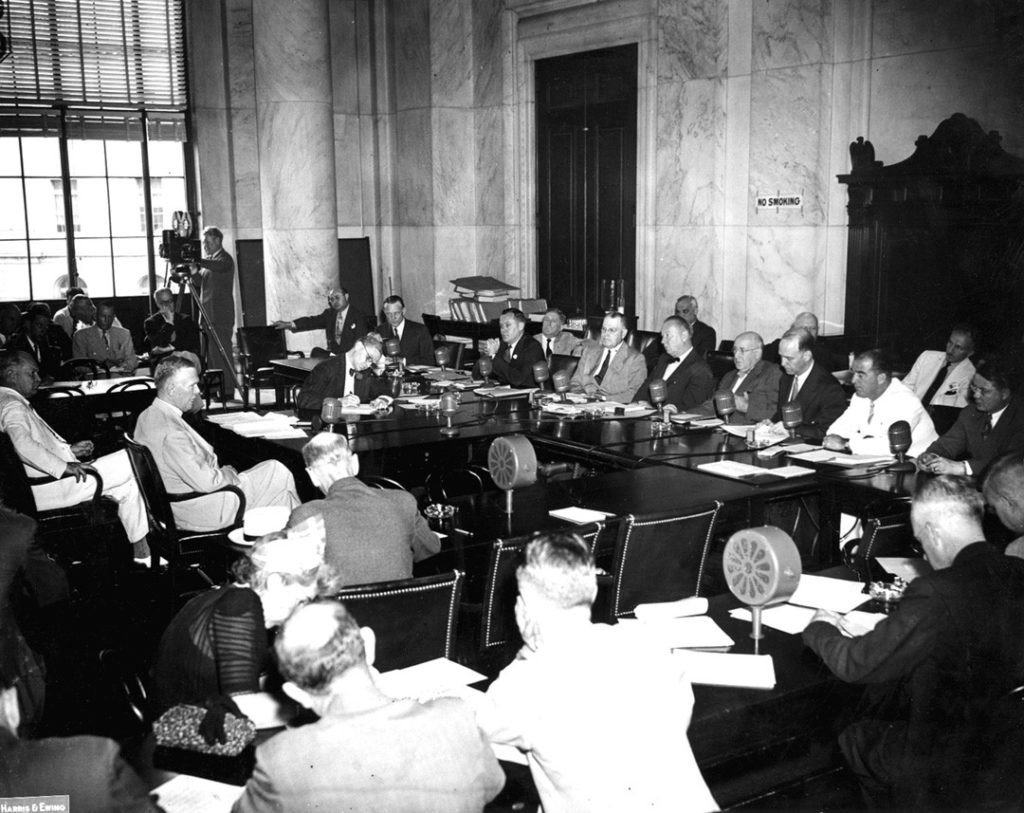
Chief of Staff Gen. George Marshall (center left) testifies to a Congressional committee before World War II.
Marshall selected Lt. Gen. Leslie McNair, the chief of staff for the General Headquarters and later leader of the Army Ground Forces during the war, as the training officer for the maneuvers. McNair understood the value of this training. McNair said:
We didn’t know how soon war would come, but we knew it was coming. We didn’t know when we’d have to fight, but we knew it might come at any time, and we had to get together something of an Army pretty darn fast. We didn’t dare stop for the progressive and logical building of a war machine. As a result, the machine was a little wobbly when it first got going. The men knew it. The officers knew it. Everyone knew it.
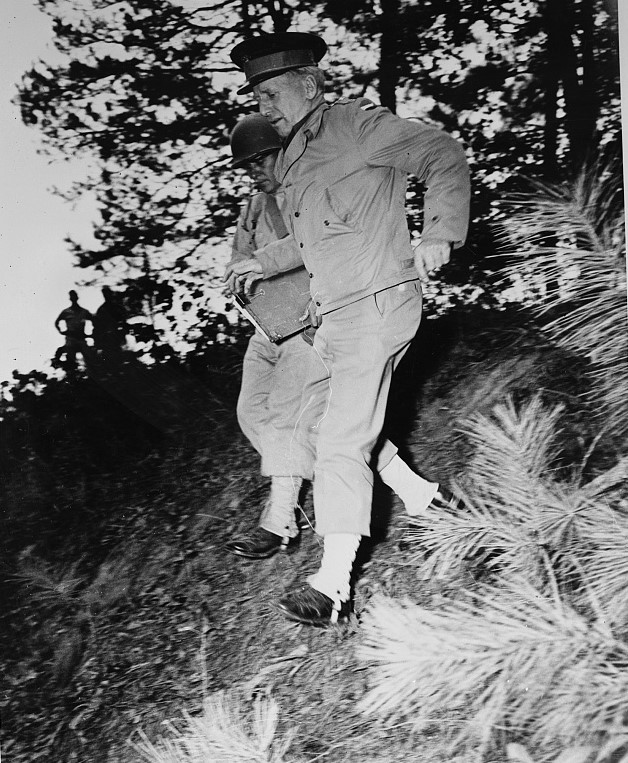
Lt. Gen. Leslie McNair scrambling down an embankment during the Louisiana Maneuvers.
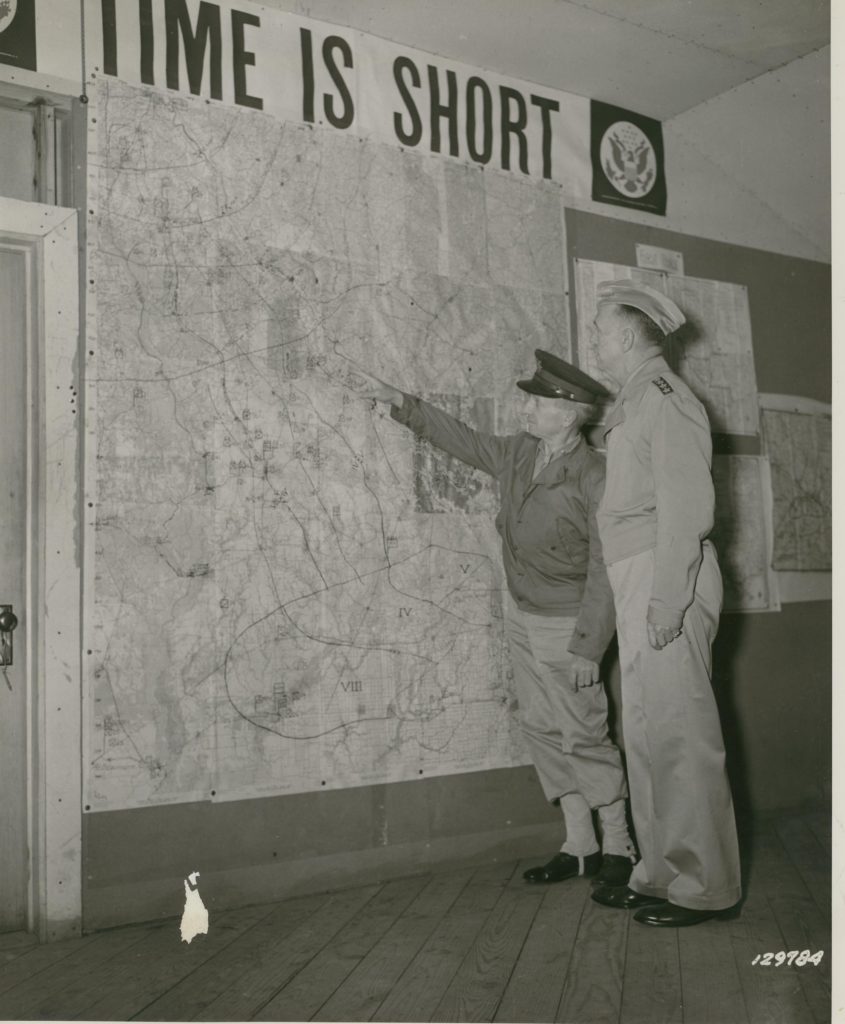
Lt. Gen. McNair and Gen. Marshall in front of a map of the Louisiana Maneuvers.
Marshall and McNair’s greatest concern was corps command. Up to this time, corps commanders had trained in theoretical war games, and training in the field would be more realistic and difficult. Marshall asked McNair to literally grade the division commanders as a process of wisely choosing corps commanders.
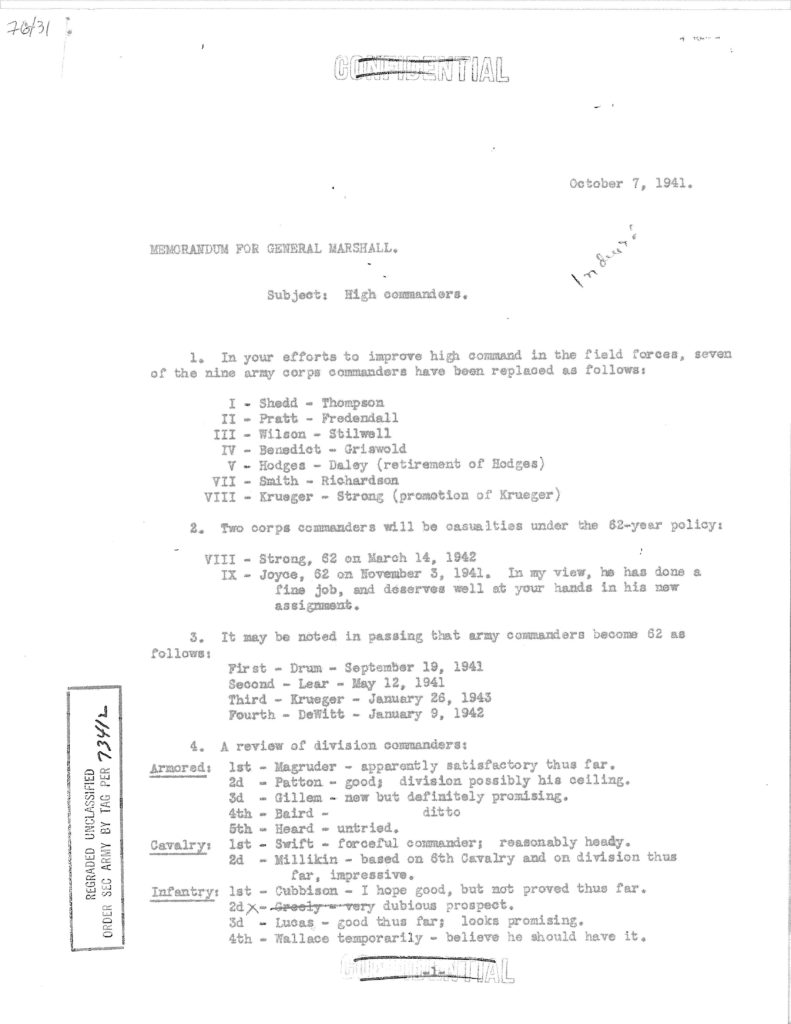
Memo from Lt. Gen. McNair to Gen. Marshall with his assessment of the commanders at the Louisiana Maneuvers.
The area chosen for this first large-scale maneuver set for September 1941 was northwestern Louisiana and encompassed some 3,400 square miles. More than 400,000 soldiers, both regular Army and National Guard, would participate, forming a Red Army and Blue Army, and totaling 19 divisions.
The red and blue armies were not able to move efficiently as the vehicles needed to detour to cross rivers at bridges. The Army didn’t have sufficient equipment for both sides, so the tanks, for instance, were with whichever army was on the offensive. Moving huge stockpiles of supplies necessary for such large numbers of soldiers was difficult.
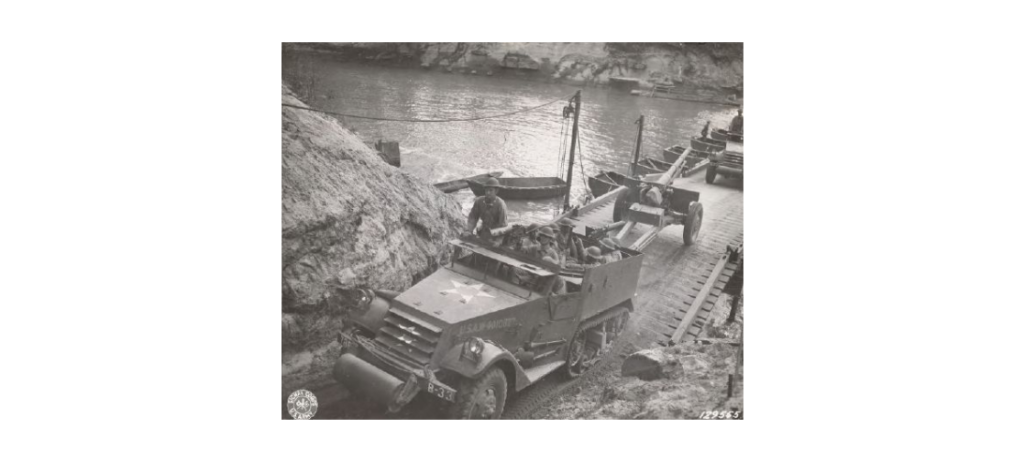
Traversing one of the few bridges across the Red River during the Louisiana Maneuvers. Louisiana Digital Library photo.
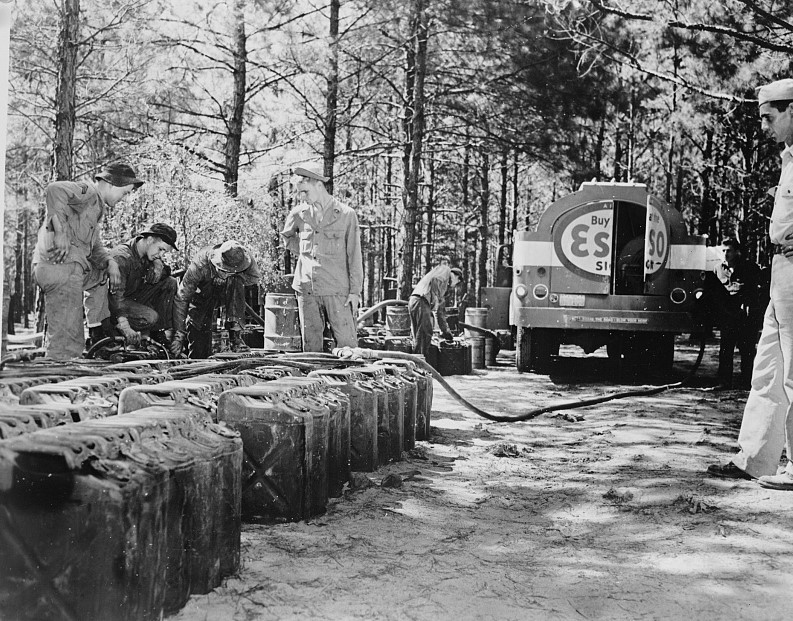
Gasoline tanker filling 5-gal. Jerry cans to keep the training armies moving during the Louisiana Maneuvers.
Although the maneuvers had boundaries, not all soldiers obeyed them. Maj. Gen. George Patton made an end-run on the boundaries by driving the tanks through off-limits Texas.
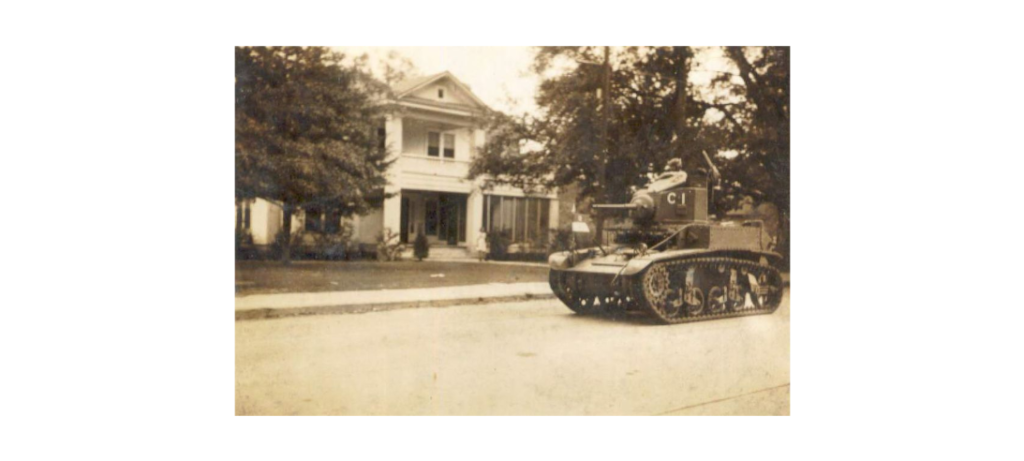
Tanks driving driving down a residential street during the Louisiana Maneuvers.
The Louisiana Maneuvers tested Army doctrine, organization and equipment as well as soldiers. The lessons learned would affect the decisions that Marshall made throughout the war.
Learn more about the Louisiana Maneuvers in this Marshall Foundation video: https://www.youtube.com/watch?v=EqkC2cjAFfk&t=102s
Before becoming director of library and archives at the George C. Marshall Foundation, Melissa was an academic librarian specializing in history. She and her husband, John, have three grown children, and live in Rockbridge County with three large rescue dogs. Melissa is known as the happiest librarian in the world! Keep up with her @MelissasLibrary.
